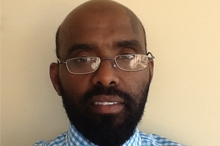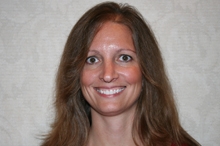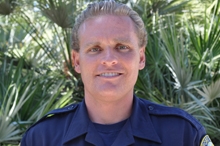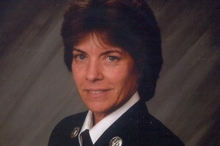Champions of Change Blog
Preparing Businesses When They Can’t Prepare Themselves
Posted by on October 17, 2013 at 2:19 PM EDT
Ira was recognized as a White House Champion of Change in Community Resilience and Preparedness.
As an emergency manager for the largest city in the United States, I’ve had my fair share of interesting conversations. When I think back to some of the more memorable ones I always think of a small business owner trying to explain to me why he didn’t think that he could or should prepare for emergencies. It wasn’t that he didn’t think it was important, he explained to me, but rather that in the scope of competing priorities – cash flow, business development, regulatory compliance, rent, payroll, etc. – it was just one that would never rise to the top of his list to justify the time and money. His focus, as he put it, was his business’ daily survival, and the ‘what ifs’ would have to wait. As our conversation drew to a close (for that day), he asked me for one thing as a public sector employee: please don’t add to his already lengthy list of regulations in an effort to jump to the top of the list.
I spent a lot of time reflecting on that particular exchange because it embodied some of the most significant challenges that emergency managers face today. We don’t have specific tasks like putting out fires, removing debris or treating patients – we focus our efforts on making sure that the people and organizations doing response and recovery have the resources they depend on to support our communities’ resiliency. Some aspects of an emergency may have straight-forward solutions, but more often than not disasters expose dependencies that many people haven’t even considered. Our dynamic and wonderfully diverse communities are webs of interdependencies that residents and businesses often take for granted. When I thought about this in its most simplistic form, I saw two key elements that we could leverage to enhance the preparedness levels across the whole community.
Residents rely on local organizations for supplies (businesses), services (community organizations) and often employment, and local organizations rely on community residents to support their businesses and work in their facilities.
We’ve also seen that local organizations (businesses and not-for-profit groups) maintain a line of communication within their communities (employees, volunteers and residents) that is consistent and trusted, something that we as emergency managers are constantly striving for.
The Partners in Preparedness program was born out of an effort to present our message of preparedness in a way that encourages businesses and organizations to leverage their trusted communication pathways to promote resilience in a way that is beneficial to them, their audience and the community. Our most important step was sitting down with representatives of businesses and organizations and simply seeking to develop solutions to any of the barriers that were preventing them from engaging in a significant preparedness effort.
As for that small business owner who sent me down this path, we got together a few months ago to go over a few things. He was pleasantly surprised that I had listened to his challenges and that we had developed solutions to address his concerns without adding to his regulatory burden. I am proud to say that he is now one of our Partners in Preparedness.
Ira Tannenbaum is the Director of Public/Private Initiatives for the New York City Office of Emergency Management (OEM).
Learn more aboutHelping My Community in the Wake of a Storm
Posted by on October 17, 2013 at 2:16 PM EDT
Mohamed was recognized as a White House Champion of Change in Community Resilience and Preparedness.
My education is in health. In Somalia and Kenya, I studied tropical medicine and conducted biomedical research, and once I immigrated to the United States, I completed a master’s degree in public health.
But I’ve found that many of my fellow Somalis face a much different situation. They confront many challenges accessing, understanding, and receiving health services and information. Health issues can be daunting, and few organizations are well equipped to handle the customs and language of my community. As a result, my people are suffering.
The gap in the refugee health experience weighed on me, and I wanted to do something to ensure my community had access to information that would protect them. Like many opportunities for change, mine came swiftly and suddenly – in the way that storms do.
Last winter, a major wind and ice storm was headed for the Puget Sound area where I live. The last time a storm of this size hit, over 200 people were hospitalized for carbon monoxide poisoning and eight people died. Most of the victims were from local immigrant communities who did not have access to information that could have prevented the poisonings.
As a community health leader, I knew it was important to help my community by warning them. I joined forces with other Somali religious leaders, community leaders and staff at Public Health – Seattle & King County. I explained the dangers of carbon monoxide to my peers and organized a rapid communication strategy for getting the message out. We sent an automated phone call to Somalis in King County, and included my personal contact information in case of questions.
It didn’t take long for the calls to pour in, and through these calls, I learned that a number of Somalis families had lost power. I worked with Public Health – Seattle & King County and local emergency management to identify shelter options and collaborated with Abubakr Islamic Center, a local mosque, to set up a culturally appropriate shelter. Then the Executive Director of the Islamic Center and I rented four-wheel-drive vehicles to deliver hot meals and to transport people to warmth and safety.
After the storm had cleared, we learned that not a single life was lost and area hospitals reported a 90% drop in admissions for carbon monoxide poisoning compared to the previous storm.
Since that storm, I collaborated with other health professionals in the Somali community to form the King County Somali Health Board, where I am currently Co-Chair. We work to improve health outcomes through meaningful partnerships and mutual education with health care entities. I’m proud of the work we have done, and even prouder of the of our local Somali community. I hope leaders in ethnic communities around the United States can learn from our experience and find their own Champions of Change.
Sometimes it’s as simple as a phone call.
Mohamed Ali, MPH, is the co-chair of the King County (WA) Somali Health Board.
Learn more aboutPreparedness in the Community and in the Home
Posted by on October 17, 2013 at 2:14 PM EDT
Michelle was recognized as a White House Champion of Change in Community Resilience and Preparedness.
First, it is not me alone who strives for every citizen in Illinois to be prepared. This mission is that of all of the 230 employees who work at the Illinois Emergency Management Agency. Our goal is a better- prepared state, and we do that not only as an agency, but also through the Illinois Terrorism Task Force as the 60-plus member homeland security policy authority in Illinois, as well as within local units of government. We try to get people across the state to better prepare themselves for a disaster of any kind, as well as encourage them to take the next step and volunteer within their community for disaster preparedness.
It’s easy to push something you believe in, but it’s another thing to live it. I know I have it covered at home with a very robust disaster preparedness kit, a storm shelter, three different weather apps for my iPhone that I always get teased about, and a communications plan for my household, which includes my husband and 9- and 7-year-old boys. Who knew that freeze-dried food was actually pretty good? As parents, my husband and I feel very strongly about showing our boys that it is wise to be ready. Far from frightening them with what-ifs, being prepared creates a sense of security in our home. We practice our shelter-in-place exercises at both home and the work place. I hope everyone else takes the opportunity to do that as well.
I am fortunate that one of my primary missions is to interact with local units of government to better prepare their communities through Citizen Corps. After the State of the Union address in 2002, Citizen Corps was developed and administered through the Federal Emergency Management Agency (FEMA) in order to capture the spirit of people who wanted to assist after the September 11th attacks. Each state was to start a Council to oversee the program and efforts of their communities to help coordinate volunteer activities that make them safer, stronger, and better prepared to respond to any emergency situation. I was named chair of Illinois’ Citizen Corps Council in the spring of 2002 and have served in this capacity ever since.
The nearly 95 counties, cities, townships, and fire protection districts in Illinois that have adopted this program are inspirational. The beauty of this program is that every single one is unique. They are all tailored to what works in their community for their citizens and first responders alike.
The reality of community preparedness is that there are many ways for people to take care of themselves as well as their neighbors before, during, and after an emergency. I encourage everyone to think of the unthinkable now—while they don’t need to. When you have to, it can be too late. While I may just be “doing my job,” when it comes to disaster readiness, everyone else needs to be doing it, as well, for themselves and their families.
Michelle Hanneken is the Homeland Security Program Manager at the Illinois Emergency Management Agency.
Learn more aboutAwareness to Action: Volunteer-Driven Initiatives for Community Preparedness
Posted by on October 17, 2013 at 2:08 PM EDT
Matt was recognized as a White House Champion of Change in Community Resilience and Preparedness.
I am honored to represent over 1000 resident volunteers as a White House Champion of Change. While serving as a congressional aide in Washington, D.C. in 1996-1997, I was exposed to the power and value of committed individuals and the positive impact they have on their communities, whether at the local, state, national or global level. It was this experience and insight that lead me down the path of public service.
Our CERT volunteer enrollment grew rapidly following Hurricane Katrina. The city’s existing Emergency Management Plan provided the foundation on which to build a committed corps of volunteers who would spread the preparedness message to their families, neighbors and local organizations. City employees, residents, businesses, schools, and civic organizations have all benefited from the CERT volunteers’ creative initiatives and diligent work. Through their efforts, Newport Beach now has the highest per‐capita CERT volunteer‐to‐resident ratio in all of California.
“Awareness to Action” is truly the mantra of the Newport Beach CERT volunteers. The initiative taken by these volunteers to develop programs and training opportunities within their own ranks and neighborhoods is impressive. Examples include the creation of:
CERT Volunteer Board of Directors: A small group of highly motivated individuals saw a need to support the growing volunteer ranks with resources over and above the standard city offering. Partnering with the City, they identified and developed training opportunities, marketing and outreach programs and assisted with administrative efforts involved in CERT recordkeeping, process documentation and event planning.
CERT Volunteers Become Trainers: Looking for ways to keep CERT volunteers engaged and active in the program beyond the required certification training. The board identified that advanced skills training was needed in radio and technology communications, mutual aid, CPR, first aid, and survival techniques.
CERT Volunteers Organize Neighborhood Events & Projects: The city has over 154 distinct neighborhoods, each with its own unique culture, needs and geography. Our volunteers are keenly aware of the necessity to create neighborhood-specific disaster plans and outreach/education programs because one-size doesn’t necessary fit all when it comes to preparedness. As a result of our volunteers’ outreach efforts, fund-raising projects for the acquisition of supplies and equipment are a top priority for many HOA’s, using creative techniques such as silent auctions. Some HOA Boards are now creating a budget line-item for emergency supplies.
We have accomplished much in the last two years, and the momentum continues to grow. However, our volunteers won’t rest on their past accomplishments. They continue to look forward and anticipate solving new preparedness challenges through creative ideas and adaptive planning. They are empowered knowing that they have the support of the community and city behind them.
Matt Brisbois is the Life Safety Specialist for the City of Newport Beach, CA.
Learn more aboutThe Value of Community Emergency Preparedness
Posted by on October 17, 2013 at 2:06 PM EDT
Lou was recognized as a White House Champion of Change in Community Resilience and Preparedness.
Growing up, I have always been fascinated with the emergency services field. When I was just a teenager, I worked on emergency vehicles such as fire trucks, police cars, and ambulances for a local emergency vehicle repair facility. When I became a manager for the facility, I interacted with fire chiefs, police chiefs and other public safety officials. This increased my awareness for the need for public safety and community service.
After moving to Hoboken, New Jersey, I read the local newspaper and discovered there was a new program that the Office of Emergency Management (OEM) was launching called the Community Emergency Response Team (CERT). I thought to myself that this would be a perfect opportunity for me to fulfill my desire to give back to the community particularly given my knowledge of emergency vehicles and communications (I am also a licensed Amateur Radio Operator, K2XDX). I joined the team in April 2010, shortly before Hurricane Irene hit shores of New Jersey four months later.
Hurricane Irene was, in effect, a “baptism by fire” for me and many of us on CERT. We had to learn quickly, adapt, and respond to the community’s needs as a result of the frequently-changing environment. Once Hoboken survived the effects of Hurricane Irene, there were an overwhelming number of applications by residents to join CERT, which was an exhilarating feeling. I felt a new sense of pride and enthusiasm in my community. I then became CERT Coordinator in June 2012 and as Coordinator, I became responsible for recruiting, managing, and training volunteers. At present, the team consists of more than 100 members.
Ironically, Hurricane Irene was just a precursor to what was about to happen: Superstorm Sandy. Superstorm Sandy was particularly damaging to the New Jersey coast and extremely damaging to Hoboken especially due to the strong storm surge, high tide, and full moon, all of which contributed to Hoboken being 80% flooded. The storm also created a loss of electricity for more than 10 days. Simply put, the City of Hoboken was desperate for as much assistance as possible. I had to think quickly for resolutions to the multiple problems that arose during and after the storm.
After experiencing these storms, I have learned the value of educating the public on emergency preparedness. In conjunction with the Mayor’s Office, I am launching a disaster preparedness plan called “Hoboken Ready” through Town Hall meetings, flyers, and social media. I am also always exploring and testing new technology that will advance communications during a traumatic event. I believe that with strong citizen volunteers and appropriate resources, all communities have the potential to conquer any challenging environment that they may face.
Lou Casciano is the Operations and Training Officer and CERT Coordinator for the City of Hoboken’s Office of Emergency Management.
Learn more aboutLos Angeles Fire Department Community Emergency Response Training (CERT)
Posted by on October 17, 2013 at 2:00 PM EDT
Stacy was recognized as a White House Champion of Change in Community Resilience and Preparedness.
Nearly 27 years ago, the Los Angeles (City) Fire Department (LAFD) introduced the first-ever public sector disaster preparedness training for citizen volunteers--Community Emergency Response Training (CERT). Americans have witnessed a plethora of large-scale disasters and the events of September 11, 2001 underscored the need to have trained citizen volunteers. The mission of CERT is to support citizen volunteers in becoming trained volunteers by providing “individualized” organization and leadership resilience training along with learned self-sufficiency following a community-wide disaster. The CERT program expanded across the Los Angeles area and is now one of the largest National City CERT programs with over 60,000 trained volunteers. To continue its perceived success, the LAFD CERT program has defined its new mission; to train ten percent (10%) of the population of Los Angeles (est. 400,000) within the next three years. This endeavor will include the collaboration between the LAFD and Los Angeles Police Department (LAPD) in assisting the City’s Emergency Management Department (EMD) in the City of Los Angeles’ mission to achieve ‘Whole Community’ Preparedness/Readiness.
CERT training provides individuals with knowledge, skills, and abilities to assist first responders in the aftermath of disasters. The main concept of CERT is to strengthen individual communities and neighborhoods as well as increase resiliency to include an all-hazards approach. Although this program has become internationally known, there is more we can do to assist with response and recovery efforts that need to occur following catastrophic events that continue to plaque our nation.
The following websites offer information on how to start a CERT program, maintain an existing program, literature to assist in educating our citizenry, and training videos that describe and illustrate the importance of CERT training.
Captain Stacy Gerlich has been involved in CERT since 1990. She served as the LAFD CERT commander from 2006-2013 and is now assigned to the Homeland Security Sections Critical Planning and Training Unit.
Learn more about
- &lsaquo previous
- …
- 37
- 38
- 39
- 40
- 41
- 42
- 43
- 44
- 45
- …
- next &rsaquo

